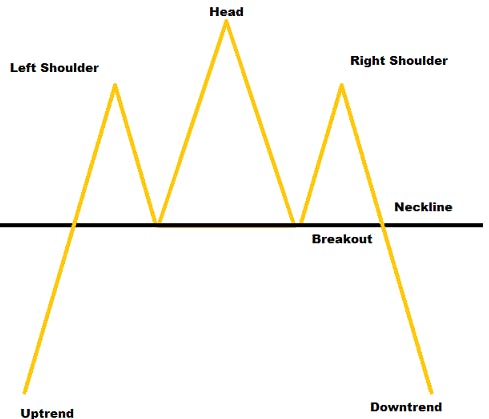
- All
- Tools
- Analytics
- Technical Analysis
- Trading
- Blockchain
- DeFi
- Guides
- Company News
- Educational
- Opinion
- Price Predictions
- Market News
- News
- Trading cases
- Practical guides
- Exchanges
- Trading signals
- Cryptocurrency
- Crypto bots
- Other
Become a crypto master
Learn everything about crypto,
trading and bots

Bitcoin Whales 2025: Who are the Biggest Players in the Cryptocurrency Market?
From Bitcoin shrimps to Bitcoin whales — this article touches on why tracking major wallets (i.e., whales) might be a good idea for your portfolio and its well-being. We cast a quick look at large holders, deconstruct what the whale means, and briefly talk about each whale within the top.
- Top Bitcoin Whales 2024: At a Glance
- What is Bitcoin Whale?
- Why Track Bitcoin Whales?
- How to Track Bitcoin Whales?
- Top 10 Crypto & Bitcoin Whales [Tracked Down and Reviewed]
- Brian Armstron — A Crypto Whale With $5.49 Billion Net Worth
- Ranking #1 in the Crypto Holders Chart
- Chris Larsen: A Crypto Whale With $2.44 Billion Net Worth
- Ranking #2 in the Crypto Holders Chart
- Michael Saylor: A Crypto Whale With $1.69 Billion Net Worth
- Ranking #3 in the Crypto Holders Chart
- Changpeng Zhao: A Crypto Whale With $1.61 Billion Net Worth
- Ranking #4 in the Crypto Holders Chart
- The Winklevoss Twins: Crypto Whales With $ 2.7 Billion Net Worth [$1.35 Billion Each]
- Ranking #5 in the Crypto Holders Chart
- Barry Silbert: A Crypto Whale With $1.26 Billion Net Worth
- Ranking #6 in the Crypto Holders Chart
- Jed McCaleb: A Crypto Whale With $1.19 Billion Net Worth
- Ranking #7 in the Crypto Holders Chart
- Tim Draper: A Crypto Whale With $930 Million Net Worth
- Ranking #8 in the Crypto Holders Chart
- Matthew Roszak: A Crypto Whale With $850 Million Net Worth
- Ranking #9 in the Crypto Holders Chart
- Other Bitcoin Whales: Companies, Countries, and Organizations
- Closing Thoughts
- Bitcoin Whales 2025: Emerging Trends and Key Players
Start Trading on 3Commas Today
Get full access to all 3Commas trading tools with free trial period

Top Bitcoin Whales 2024: At a Glance
Let’s break down the top 10 Bitcoin whales using the crypto holder chart below.
Crypto Holders Chart Ranking | Holder | Holding amount |
#1 Bitcoin Whale | Brian Armstrong | Net Worth $5.49 Billion |
#2 Bitcoin Whale | Chris Larsen | Net Worth $2.44 Billion |
#3 Bitcoin Whale | Michael Saylor | Net Worth $1.69 Billion |
#4 Bitcoin Whale | Changpeng Zhao | Net Worth $1.61 Billion |
#5 Bitcoin Whale | The Winklevoss Twins | Net Worth $1.35 Billion each or $2,7 in total |
#6 Bitcoin Whale | Barry Silbert | Net Worth $1.26 Billion |
#7 Bitcoin Whale | Jed McCaleb | Net Worth $1.18 Billion |
#8 Bitcoin Whale | Tim Draper | Net Worth $930 Million |
#9 Bitcoin Whale | Matthew Roszak | Net Worth $850 Million |
What is Bitcoin Whale?
Bitcoin whale also known as a crypto whale or just whale, is a term to describe a large BTC holder. Any retail or institutional investor can qualify for being a whale if holding enough Bitcoin. Even though the status is quite subjective and doesn’t reflect anything specific, whales usually have enough resources to manipulate the Bitcoin price.
Bitcoin Distribution, Crypto Whales, and Tiers
The Tier | Bitcoin Holding |
Bitcoin Shrimp | Less [<] 1 BTC |
Bitcoin Crab | 1 to 10 BTC |
Bitcoin Octopus | 10 to 50 BTC |
Bitcoin Fish | 50 to 100 BTC |
Bitcoin Dolphin | 100 to 500 BTC |
Bitcoin Shark | 500 to 1000 BTC |
Bitcoin Whale | Over [>] 1000 BTC |
The threshold to become a whale varies across various crypto assets, but the rule of thumb is holding 10% of the total supply. The Bitcoin whale status requires at least 1000 BTC stored in a wallet. Naturally, the number of such wallets is quite limited.
Bitcoin shrimps are the most common market participants in sheer numbers, while other investors like whales account for bigger allocations in general. Incoming whales force out Bitcoin Shrimps off the market, as bigger market players buy the holding of retail investors. Effectively, the share of whales increases proportionally to Bitcoin shrimp over time.
At least half of the table are Bitcoin shrimps, holding the first 6 rows straight. Their overall holdings don’t exceed 6.1% of BTC supply, though. Imagine how much power whales may have over the BTC price, holding the rest 93.9%. You can find the relevant information about the Bitcoin whale watch using the link.
Why Track Bitcoin Whales?
Since Bitcoin whales are wallet addresses that store enormous sums of BTC, they may account for price changes, especially on less prominent exchanges with low liquidity. Large BTC volumes dumped onto the market or transferred from one wallet to another may put a major pressure on prices. Regular Bitcoin investors might want to consider such an influence to limit the losses. Real-time tracking of Bitcoin whales allows small-time traders to tame the volatility risks and perform better overall.
Despite the global and decentralized profile of Bitcoin, locating and monitoring whales is as simple as collecting easily available transaction data from cryptocurrency exchanges and services. Monitoring known whale addresses, order books, abrupt changes in market capitalization, and trades on crypto exchanges are the four basic techniques to follow whale activity.
Monitoring known whales gives smaller investors an advantage since the likelihood of stumbling across a whale deal increases dramatically. Furthermore, maintaining watch of market developments through order books and trades on cryptocurrency exchanges suggests impending whale trades that may be leveraged to benefit amid turbulence.
How to Track Bitcoin Whales?
You can track Bitcoin whales using dashboards and crypto holding charts. While following huge crypto wallets, you have a better chance of spotting trading opportunities, thus potentially unlocking more profits. Imagine a Bitcoin whale placing a massive buy order around the support level. You can prepare for the bounce and capitalize on the tracked order.
Following live trade activity includes a number of time-consuming operations if done manually. This way, you keep an eye on order books for one or more assets. You can also build a portfolio and set the alerts. Many exchanges like Binance support the portfolio features. You can use side platforms like CoinMarketCap or 3Commas to further your portfolio management. 3Commas allows you to create a watchlist and continually monitor for signals in an automated way.
Another good way to track Bitcoin whales is by following alerts on Twitter. The Whale Alert community is a bright example — you can get dynamic alerts and monitoring for a variety of cryptocurrencies, including Bitcoin. Some other platforms provide dashboards for advanced tracking, live transaction streams and filters. The tracking principle stays the same, though.
Generally, tracking can be beneficial for crypto investors to understand the trends and act on reversals, making Bitcoin whale tracking a perfect fit for automated trading. You can combine tracking with signals and crypto trading bots for maximum exposure.
Top 10 Crypto & Bitcoin Whales [Tracked Down and Reviewed]
Brian Armstron — A Crypto Whale With $5.49 Billion Net Worth
Ranking #1 in the Crypto Holders Chart
Coinbase CEO spearheads the list of top crypto whales with an estimated net worth of $5.49 billion. While no one knows exactly how many Bitcoins the CEO holds, Brian Armstrong owns at least 19% of all Coinbase holdings. In other words, Armstrong can withdraw Bitcoin on demand.
He launched Coinbase in 2012 and was a millionaire by 2018. Several years later his stake in the company had grown in folds. In the first quarter of 2021, the exchange earned more than $1 billion, furthering Brian’s networth to $15 billion.
Chris Larsen: A Crypto Whale With $2.44 Billion Net Worth
Ranking #2 in the Crypto Holders Chart
Larsen co-founded the online credit lending platform ELoan back in 1997, followed by a P2P lending service, Prosper. Several years later, Larsen joined forces with JedMcCaleeb to launch Ripple Labs. The blockchain network for cross-border banking transactions has eventually turned both entrepreneurs into Bitcoin whales. Larsen held around $14.37 billion before the XRP crash, but the rough market and endless lawsuits squeezed his net worth, resulting in $2.44 billion as of writing.
Michael Saylor: A Crypto Whale With $1.69 Billion Net Worth
Ranking #3 in the Crypto Holders Chart
Michael Saylor is CEO of MicroStrategy, an analytics software company with cloud-based services. The company has close to 130,000 Bitcoins as of writing. The average purchase price hangs around $30,623, with a total cost of nearly $4 billion. Michael Saylor's personal holdings average at 18,000 Bitcoins.
Changpeng Zhao: A Crypto Whale With $1.61 Billion Net Worth
Ranking #4 in the Crypto Holders Chart
Changpeng Zhao [CZ] is a Chinese-Canadian entrepreneur widely known as the Binance CEO. His Bitcoin whale journey started off back in 2014 when he sold his Shanghai home to finance his investment. It turned out to be a success, and several years later, CZ launched Binance.
The exchange became the most popular online crypto exchange in just under 12 months. His real net worth is questionable, as the exchange has many assets across sectors. The officially reported net worth sits at $1.61 billion.
The Winklevoss Twins: Crypto Whales With $ 2.7 Billion Net Worth [$1.35 Billion Each]
Ranking #5 in the Crypto Holders Chart
Tightly associated with Facebook drama, the Winklevoss brothers gained fame after accusing Mark Zuckerberg of stealing their social network concept. They invested a part of the settlement into Bitcoin, resulting in approximately 70,000 Bitcoins. However, some part of the holdings is related to the Gemini exchange they founded. Each brother has a net worth of around $1.35 billion as of writing.
Barry Silbert: A Crypto Whale With $1.26 Billion Net Worth
Ranking #6 in the Crypto Holders Chart
Barry Silbert is yet another early investor and Bitcoin whale. He founded the Digital Currency Group [DCG] back in 2013. DCG comprises five crypto-focused venture companies that accumulated $28 worth of crypto assets. Silbert himself holds 48,000 Bitcoins as of writing.
Jed McCaleb: A Crypto Whale With $1.19 Billion Net Worth
Ranking #7 in the Crypto Holders Chart
McCaleb, a Ripple co-founder, we briefly mentioned earlier. Most of McCaleb's wealth comes from XRP tokens. Their leftovers, to be precise, as the personal net worth dropped significantly after the XRP crash, resulting in $1.19 billion as of writing. Jed has launched several projects after leaving Ripple Labs, including Mt Gox crypto exchange and Stellar Network [close to $4 billion worth of assets].
Tim Draper: A Crypto Whale With $930 Million Net Worth
Ranking #8 in the Crypto Holders Chart
Having ancestry connected to the Silicon Valley business, Tim Draper knows an excellent opportunity when he sees one. Just similarly, he saw the potential of Bitcoin in the early years.
Draper bought 30,000 Bitcoin, resulting in a $930 million crypto net worth as of writing. Outside of crypto, he is also a significant stakeholder in Baidu, Tesla, Skype, and more.
Matthew Roszak: A Crypto Whale With $850 Million Net Worth
Ranking #9 in the Crypto Holders Chart
Lastly, Matthew Roszak concludes the top ten Bitcoin holders chart. Roszak is an established venture capitalist and entrepreneur who started building a crypto portfolio in 2012. Today he is co-founder and chair of Bloq, the blockchain tech start-up based in Chicago.
In addition, he consults on high-level banking initiatives to set up digital asset security measures. Roszak also co-led a scheme to offer $50 of digital assets to every Congress member, although not all accepted. His current net worth sits around $850 million.
Other Bitcoin Whales: Companies, Countries, and Organizations
Tesla — A Major Bitcoin Whale
Not many people believed a company like Tesla would voluntarily get entangled with cryptocurrency, but it did. Or maybe Elon Musk’s enthusiasm is just too strong. Nevertheless, the electric car company held substantial Bitcoin amounts before it sold a bigger part to cover taxes. The company believes in crypto so much that all Tesla customers can buy their cars and products using crypto. The first S model was bought in 2013 using Bitcoin from a Lamborghini dealership.
Bulgaria — A Country Bitcoin Whale
In 2019, Bulgaria became the first country to have more cryptocurrency than gold. With over 200,000 Bitcoins in its holding, Bulgaria is a significant player. Some of the recent reports claimed Bulgaria currently has over $9 billion worth of BTC.
Federal Bureau of Investigation — An Agency Bitcoin Whale
The FBI is known to intermittently hold large amounts of Bitcoin along with other crypto assets. Due to the nature of their work, their Bitcoin holdings almost entirely come from seized properties.
They would then auction the seized Bitcoins to interested buyers. Barry Silbert bought 48,000 BTC from the Bureau in 2013. If you count all the Bitcoin that has ever passed through the FBI it might be in the millions. Their current reserve is reportedly 144,000 BTC.
Satoshi Nakamoto — An Anonymous Bitcoin Whale
We’d be crazy not to put the Bitcoin inventor himself (or herself?) on this list. With reportedly over 1 million Bitcoins in holding, this crypto shadow is watching the rest of us sheep on his silent throne, possibly judging our financial decisions.
The influence on the Bitcoin market Satoshi has is unimaginable. He could literally plummet the price in one day and skyrocket it on the next if he chose to. We hope that day will never come, but Roger Ver is already planning on doing something of that degree.
Closing Thoughts
Tracking Bitcoin whales might be fun and efficient at the same time, especially if trading is your side hustle. Back in 2016, whales grew by leaps and bounds, but 2022 shows major capitulations across the board. Despite this, the total dollar-denominated balance whales hold is still pretty solid. Overall, you might want to track some specific wallets to understand the market climate and act accordingly.
Bitcoin Whales 2025: Emerging Trends and Key Players
As the forecasts for the remaining years of the 2020s proceed, the role of Bitcoin whales—economically significant actors in the cryptocurrency market who own a large amount of Bitcoin—keeps standing out as perhaps one of the biggest influencing forces of activity in the cryptocurrency market. While the data available suggests a significant decline in the frequency of market-making activity of whales, there has been a notable increase in the level of accumulation activity of wallets classified as containing between 1,000 to 10,000+ BTC, which have surged to their highest levels since the second half of the 2024. This increase clearly shows accumulation tendencies which suggests some optimism among big holders even with the unpredictable swings in the markets.
On the other hand, the activity of institutions has also picked up. MicroStrategy, formed under Michael Saylor’s leadership, has more recently, at the end of March 2025, paid for additional Bitcoin; the latest reports indicate that the corporation has acquired more than five hundred and twenty-eight thousand Bitcoin (528,000 BTC). This accumulation expresses the strong rising direction of corporate and institutional involvement adopting Bitcoin into their reserve assets.
Also noteworthy is the Trump family’s foray into Bitcoin mining through a joint venture with American Bitcoin and Hut 8. This increasingly marks the presence of Bitcoin investment plans by political heads. This project seeks to create a strategic reserve of Bitcoin, part of a broader strategy to claim global leadership in digital assets for the United States.
These updates highlight new Bitcoin strategies from its top holders and how they affect the overall market, further emphasizing the need for professional traders and asset managers to track whale movements as part of a systematic investment strategy that incorporates this additional market intelligence into their plans.
On-Chain Analytics: Interpreting Whale Behavior in 2025
Whales are best tracked using on-chain analytics, which allow us to witness shifts in market sentiment among holders of larger wallets. The blockchain's metadata improves over time, increasing the ability to scrutinize patterns, particularly during liquidity droughts or volatile phases, which will continue to be the case in 2025.
Observed trends point toward a shift in bullish sentiment where we expect to remain stagnant for a while, since more BTC seems to be in circulation. Bulk whale movements to cold wallets indicate an increased sell-bias, which means using funds in the long run. Such factors contribute to decreasing macroeconomic certainty where Bitcoin gets expelled as an active speculative asset and activated as a strategic reserve.
There seems to be an outburst in large block trades (>10 million value) occurring outside of active hours. These transactions are usually channeled through OTC desks, where they are most likely executed during off hours. Such situations usually lead to price dislocations or coordinated collection phases preceding price movement.
Monitoring analytics such as inflows into exchanges, spent output age bands (SOAB), and wallet clustering has become essential for early-stage market rotations for professional market participants. Unlike traditional methods of business intelligence with long latencies and pre-annotated events, combining algorithmic alerts and smart contract triggers with on-chain analytics bolsters decision-making in high-velocity and low-latency environments.
FAQ
Bitcoin whales hold over the half of total BTC supply. You can check the latest info using any whale watch online resource, especially if you know a specific whale address or use a wide-known whale address.
Monitoring known whale address and over the counter [OTC] whale activity shows that whales actively trade not only on crypto exchanges, but outside. Crypto exchange trading via order books affects price directly, while OTC trading causes sudden change in market price indirectly. Either way, whale wallets impact trading and are keen to hold Bitcoin.
The number of Bitcoin whales reached the highest level in February 2021 (at just under 2,500). However, the number has fallen steadily since then.
You can find Bitcoin whales by tracking the wallet addresses that belong to the largest holders of the coin. You can also follow sites such as Whale Alert to monitor Bitcoin whale transactions.

READ MORE
- Top Bitcoin Whales 2024: At a Glance
- What is Bitcoin Whale?
- Why Track Bitcoin Whales?
- How to Track Bitcoin Whales?
- Top 10 Crypto & Bitcoin Whales [Tracked Down and Reviewed]
- Brian Armstron — A Crypto Whale With $5.49 Billion Net Worth
- Ranking #1 in the Crypto Holders Chart
- Chris Larsen: A Crypto Whale With $2.44 Billion Net Worth
- Ranking #2 in the Crypto Holders Chart
- Michael Saylor: A Crypto Whale With $1.69 Billion Net Worth
- Ranking #3 in the Crypto Holders Chart
- Changpeng Zhao: A Crypto Whale With $1.61 Billion Net Worth
- Ranking #4 in the Crypto Holders Chart
- The Winklevoss Twins: Crypto Whales With $ 2.7 Billion Net Worth [$1.35 Billion Each]
- Ranking #5 in the Crypto Holders Chart
- Barry Silbert: A Crypto Whale With $1.26 Billion Net Worth
- Ranking #6 in the Crypto Holders Chart
- Jed McCaleb: A Crypto Whale With $1.19 Billion Net Worth
- Ranking #7 in the Crypto Holders Chart
- Tim Draper: A Crypto Whale With $930 Million Net Worth
- Ranking #8 in the Crypto Holders Chart
- Matthew Roszak: A Crypto Whale With $850 Million Net Worth
- Ranking #9 in the Crypto Holders Chart
- Other Bitcoin Whales: Companies, Countries, and Organizations
- Closing Thoughts
- Bitcoin Whales 2025: Emerging Trends and Key Players





